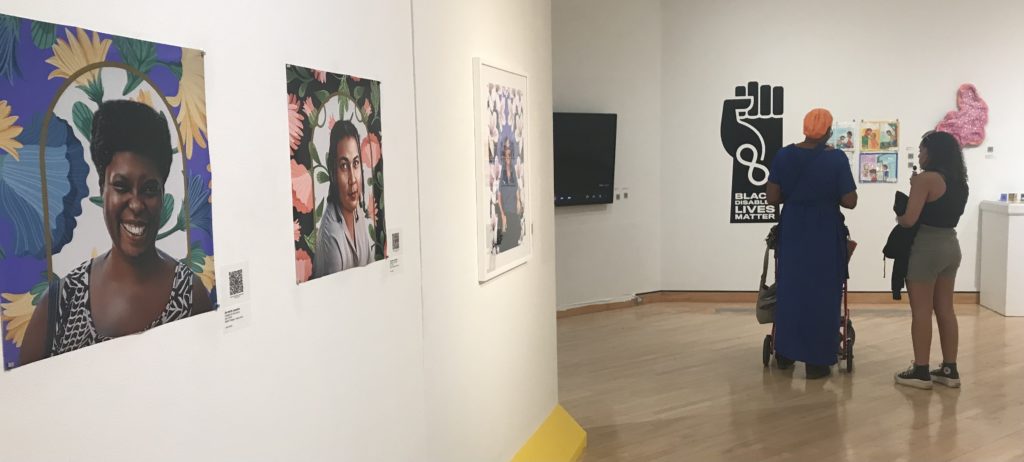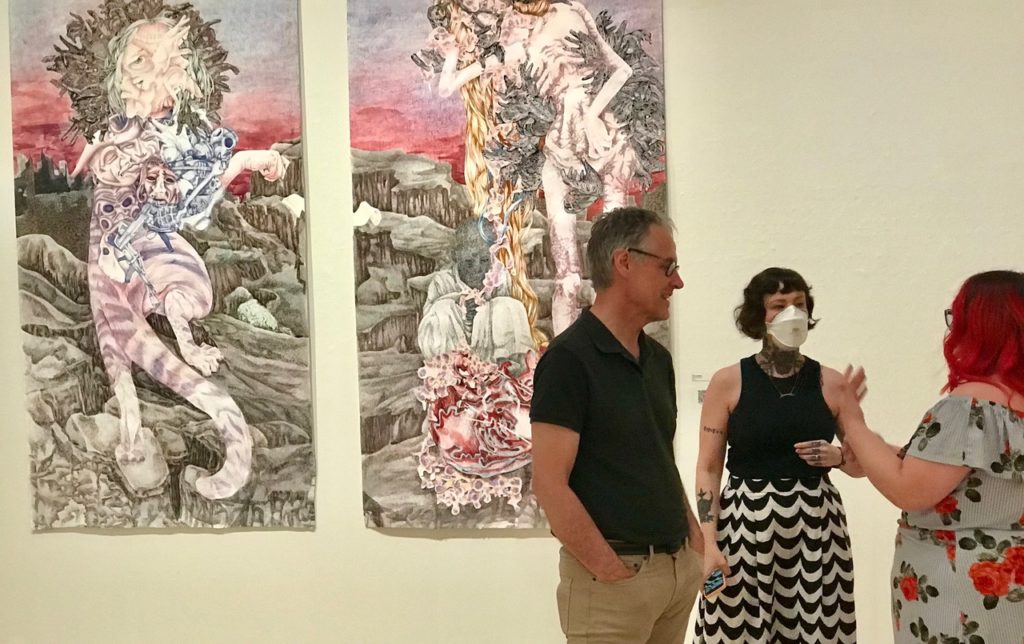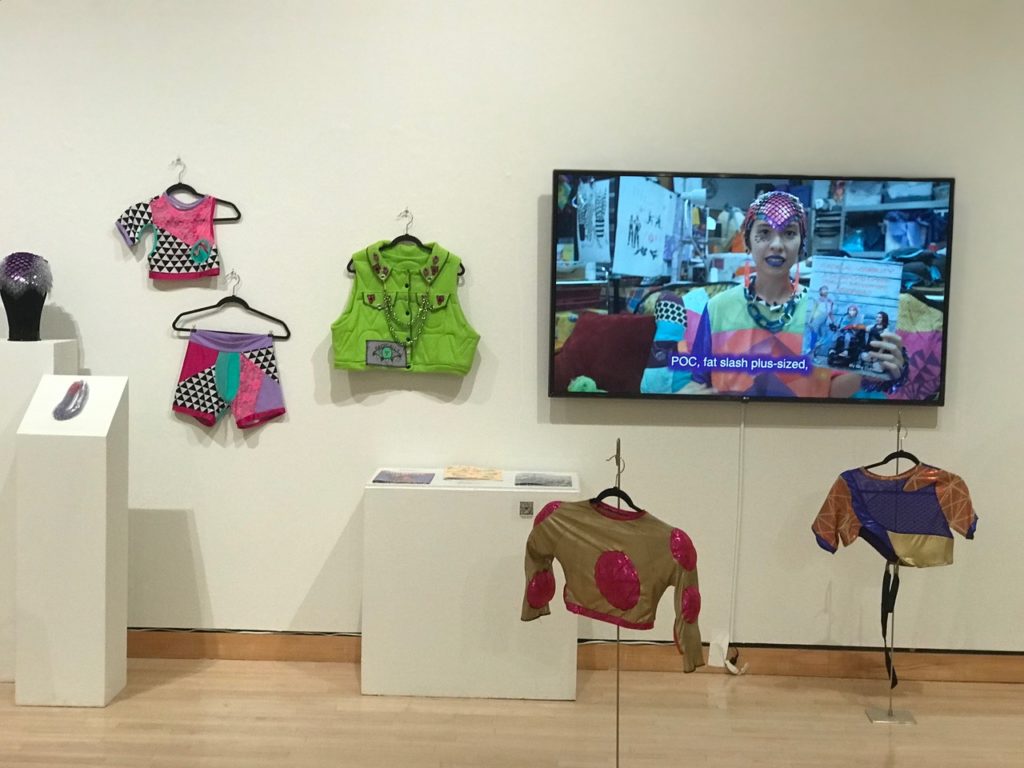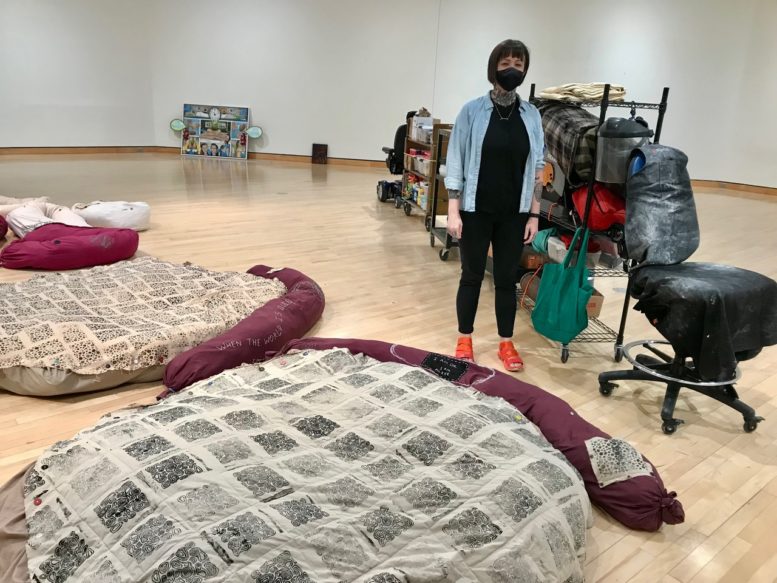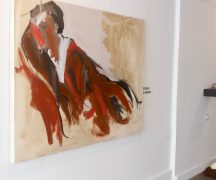By DAVID DUPONT
BG Independent News
Andrea Cardinal sees herself in the work included in “Destroy the Gap.”
The exhibit, which opens Friday in BGSU’s Bryan Gallery, features work by artists with disabilities, both evident and invisible.
“These are folks who that are creating artwork that reflects their lived experiences,” said Cardinal, who curated the show. “One of the focuses of the show is showing people what our lives are actually like.”
Cardinal, a BGSU assistant professor of graphic design, has invisible disabilities.
People are surprised, she said, to learn that she has neurodivergence – autism and ADHD. “People are very surprised because we have such inadequate understanding of neurodivergence especially around female-identified folks.”
She also has a chronic pain and fatigue illness, which has been diagnosed as fibromyalgia, but may instead be a rare connective tissue disorder. The disorder was caused by a viral infection about nine years ago and exacerbated by a case of COVID last year. She doesn’t have the luxury of letting her guard down, so she continues to wear a mask.

On Tuesday, the exhibit was still a work in progress with work on the floor and leaning against the gallery walls.
“Destroy the Gap” examines a range of conditions in a range of media.
The zines that will be displayed, Cardinal said, “are near and dear to my heart because I spend a lot of time in bed. I have a hard time sitting for long periods of time or standing for long period.”
The poets and essayists are developing a framework and language to explain “what the lived experience is like for those with chronic pain and fatigue.”
Metalsmith Elizabeth M. Meadows, a BGSU graduate student, is displaying the train of carts she uses to move about campus with all her gear.
Crystalyn Hutchens, who earned her Master’s of Fine Arts from BGSU, displays a large-scale nude in oils in gray tones that reflect her own struggles with chronic illness. The sculptural figure is contorted and cramped inside the frame.
Painter Amanda Gargac, a 2023 MFA graduate, uses a more hallucinogenic palette to reflect on her experience with chronic pain.
A video of Chanika Svetvilas performing inside pharmacy with a chain of pill bottles representing all the medication she needs to control her bipolar condition will be shown, along with the pill bottle sculpture.
Rebirth Garments / Radical Visibility Collective is exhibiting garments made for those in wheelchairs or with limb differences. The collective stages “joyful and raucous performances which are all about the queer crip movement, this radical accessibility, and acceptability of human beings and all these shapes and forms we come in,” Cardinal said.
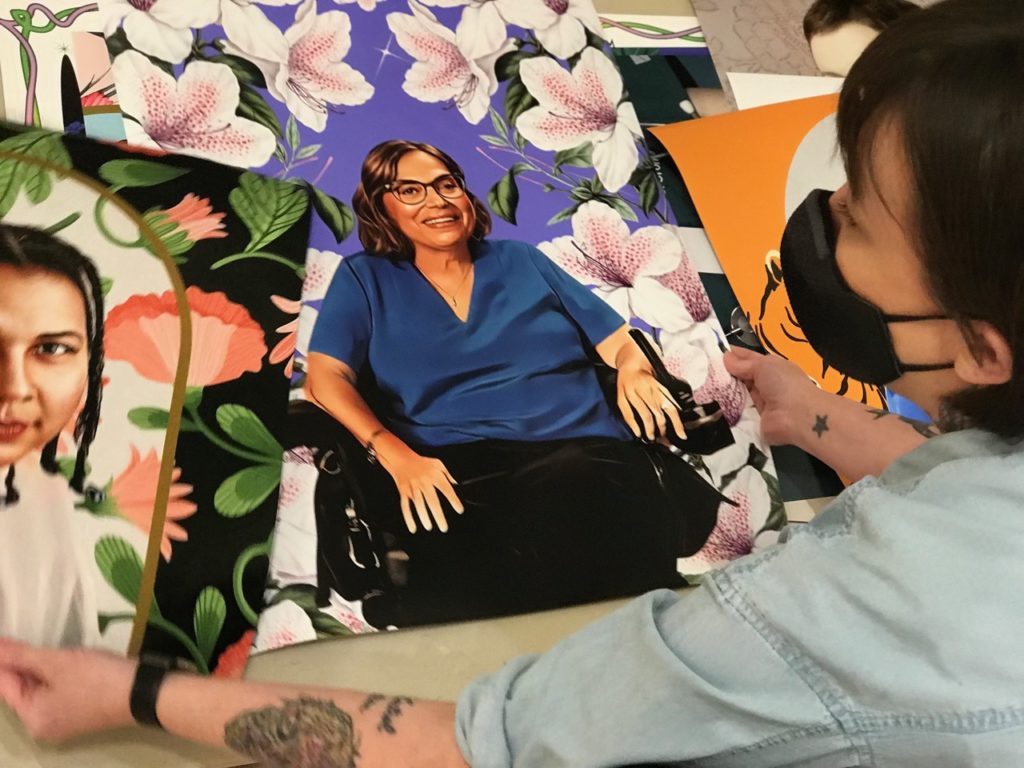
The exhibit also includes digital collage portraits of disability activists, including Judy Heumann considered “The Mother of the Disability Movement.” Without her, Cardinal said, there would be no Americans with Disabilities Act. Heumann and the others portrayed by Jen White Johnson are people everyone should know.
The 24 artists – all but two identify as having disabilities – were chosen from 126 artists who submitted more than 500 works.
The exhibit coincides with the University and College Design Association Design Education Summit: SAME/DIFFERENCE, DESTROY THE GAP.
Director of the School of Art Charles Kanwischer offered the gallery space for the show, which serves as an extension of the international summit.
An opening reception will be held Friday, May 12 from 5-7 p.m. in the Bryan Gallery. The show continues through June 4.
Cardinal made sure the exhibit itself was accessible. QR codes for each art work provide a spoken description and background on the work and Braille descriptions are also provided. There’s a large print version of the catalog.
These are available, Cardinal noted, whenever someone visits the gallery. No prior arrangements need to be made.
Opening night
